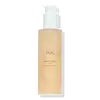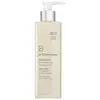What's inside
What's inside
 Key Ingredients
Key Ingredients

 Benefits
Benefits

 Concerns
Concerns

 Ingredients Side-by-side
Ingredients Side-by-side

Water
Skin ConditioningSodium Lauroyl Methyl Isethionate
CleansingGlycerin
HumectantCocamidopropyl Betaine
CleansingAcrylates Copolymer
Sodium Methyl Oleoyl Taurate
CleansingSodium Cocoyl Isethionate
CleansingSodium Laurylglucosides Hydroxypropylsulfonate
CleansingSodium Hydroxide
BufferingPhenoxyethanol
PreservativeCaprylyl Glycol
EmollientCaprylic/Capric Triglyceride
MaskingSodium Chloride
MaskingCitrus Aurantium Dulcis Fruit Extract
MaskingPotassium Sorbate
PreservativeAloe Barbadensis Leaf Juice
Skin ConditioningSodium Benzoate
MaskingHexylene Glycol
EmulsifyingCitrus Aurantium Dulcis Peel Extract
Emulsion StabilisingElettaria Cardamomum Seed Extract
PerfumingLavandula Angustifolia Flower/Leaf/Stem Extract
MaskingPropanediol
SolventPanthenol
Skin ConditioningCitric Acid
BufferingEugenia Caryophyllus Flower Extract
AstringentGardenia Taitensis Flower Extract
Skin ConditioningHedychium Spicatum Extract
Skin ConditioningHibiscus Abelmoschus Seed Extract
MaskingJasminum Officinale Flower/Leaf Extract
MaskingPlumeria Rubra Flower Extract
Skin ConditioningPrunus Armeniaca Fruit Extract
Skin ConditioningPyrus Malus Fruit Extract
Skin ConditioningVanilla Planifolia Fruit Extract
Skin ConditioningBuddleja Officinalis Flower Extract
UV FilterCamellia Sinensis Leaf Extract
AntimicrobialPanax Quinquefolius Root Extract
AstringentHydroxycitronellal
PerfumingLimonene
PerfumingWater, Sodium Lauroyl Methyl Isethionate, Glycerin, Cocamidopropyl Betaine, Acrylates Copolymer, Sodium Methyl Oleoyl Taurate, Sodium Cocoyl Isethionate, Sodium Laurylglucosides Hydroxypropylsulfonate, Sodium Hydroxide, Phenoxyethanol, Caprylyl Glycol, Caprylic/Capric Triglyceride, Sodium Chloride, Citrus Aurantium Dulcis Fruit Extract, Potassium Sorbate, Aloe Barbadensis Leaf Juice, Sodium Benzoate, Hexylene Glycol, Citrus Aurantium Dulcis Peel Extract, Elettaria Cardamomum Seed Extract, Lavandula Angustifolia Flower/Leaf/Stem Extract, Propanediol, Panthenol, Citric Acid, Eugenia Caryophyllus Flower Extract, Gardenia Taitensis Flower Extract, Hedychium Spicatum Extract, Hibiscus Abelmoschus Seed Extract, Jasminum Officinale Flower/Leaf Extract, Plumeria Rubra Flower Extract, Prunus Armeniaca Fruit Extract, Pyrus Malus Fruit Extract, Vanilla Planifolia Fruit Extract, Buddleja Officinalis Flower Extract, Camellia Sinensis Leaf Extract, Panax Quinquefolius Root Extract, Hydroxycitronellal, Limonene
Water
Skin ConditioningGlycerin
HumectantSodium Lauroyl Methyl Isethionate
CleansingPropanediol
SolventSodium Cocoamphoacetate
CleansingCocamidopropyl Hydroxysultaine
CleansingDisteareth-75 Ipdi
Glycereth-7 Caprylate/Caprate
EmulsifyingSodium Chloride
MaskingTrisodium Ethylenediamine Disuccinate
PEG-40 Hydrogenated Castor Oil
EmulsifyingMandelic Acid
AntimicrobialGlycolic Acid
BufferingSalix Alba Bark Extract
AstringentPhytic Acid
Potassium Azeloyl Diglycinate
Skin ConditioningCitric Acid
BufferingFarnesol
PerfumingBarosma Betulina Leaf Extract
PerfumingSodium PCA
HumectantSodium Hyaluronate
HumectantTremella Fuciformis Extract
HumectantAloe Barbadensis Leaf Juice
Skin ConditioningBisabolol
MaskingHydrolyzed Soy Protein
HumectantCamellia Sinensis Leaf Extract
AntimicrobialButylene Glycol
HumectantCaprylic/Capric Triglyceride
MaskingDimethyl Isosorbide
SolventAlcohol
AntimicrobialSodium Phytate
Jasminum Officinale Flower/Leaf Extract
MaskingVitis Vinifera Fruit Extract
Skin ConditioningLavandula Angustifolia Flower/Leaf/Stem Extract
MaskingEugenia Caryophyllus Flower Extract
AstringentPolyglyceryl-3 Laurate
EmulsifyingPEG-7 Glyceryl Cocoate
EmulsifyingSodium Hydroxide
BufferingBenzoic Acid
MaskingSodium Benzoate
MaskingPotassium Sorbate
PreservativePhenoxyethanol
PreservativeWater, Glycerin, Sodium Lauroyl Methyl Isethionate, Propanediol, Sodium Cocoamphoacetate, Cocamidopropyl Hydroxysultaine, Disteareth-75 Ipdi, Glycereth-7 Caprylate/Caprate, Sodium Chloride, Trisodium Ethylenediamine Disuccinate, PEG-40 Hydrogenated Castor Oil, Mandelic Acid, Glycolic Acid, Salix Alba Bark Extract, Phytic Acid, Potassium Azeloyl Diglycinate, Citric Acid, Farnesol, Barosma Betulina Leaf Extract, Sodium PCA, Sodium Hyaluronate, Tremella Fuciformis Extract, Aloe Barbadensis Leaf Juice, Bisabolol, Hydrolyzed Soy Protein, Camellia Sinensis Leaf Extract, Butylene Glycol, Caprylic/Capric Triglyceride, Dimethyl Isosorbide, Alcohol, Sodium Phytate, Jasminum Officinale Flower/Leaf Extract, Vitis Vinifera Fruit Extract, Lavandula Angustifolia Flower/Leaf/Stem Extract, Eugenia Caryophyllus Flower Extract, Polyglyceryl-3 Laurate, PEG-7 Glyceryl Cocoate, Sodium Hydroxide, Benzoic Acid, Sodium Benzoate, Potassium Sorbate, Phenoxyethanol
Ingredients Explained
These ingredients are found in both products.
Ingredients higher up in an ingredient list are typically present in a larger amount.
Aloe Barbadensis Leaf Juice comes from leaves of the aloe plant. Aloe Barbadensis Leaf Juice is best known for helping to soothe sunburns. It is also anti-inflammatory, moisturizing, antiseptic, and can help heal wounds.
Aloe is packed with good stuff including Vitamins A, C, and E. These vitamins are antioxidants, which help fight free-radicals and the damage they may cause. Free-radicals are molecules that may damage your skin cells, such as pollution.
Aloe Barbadensis Leaf Juice also contains sugars. These sugars come in the form of monosaccharides and polysaccharides, folic acid, and choline. These sugars are able to help bind moisture to skin.
It also contains minerals such as calcium, 12 anthraquinones, fatty acids, amino acids, and Vitamin B12.
Learn more about Aloe Barbadensis Leaf JuiceCamellia Sinensis Leaf Extract is derived from the leaves of the tea plant. Black tea, green tea, and oolong tea are all harvested from this plant.
This ingredient has many skin benefits:
This ingredient contains polyphenols, a strong antioxidant. Antioxidants help fight off molecules that damage skin cells.
On top of that, the antioxidants in green tea neutralize free-radicals from the sun. This gives the skin some extra UV protection, but should not replace sunscreen.
Many components of tea have anti-inflammatory properties.
Polyphenols and L-theanine help soothe the skin and reduce irritation. The caffeine in Camellia Sinensis Leaf Extract helps calm inflamed blood vessels.
Other compounds found in tea include: Vitamin Bs, linoleic acid, magnesium, calcium, iron, and zinc.
Research has shown both drinking Camellia Sinensis Leaf Tea and applying it to the skin can help boost skin elasticity and hydration. Studies also show using tea extract may reduce sebum, or oil, production.
Learn more about Camellia Sinensis Leaf ExtractThis ingredient is an emollient, solvent, and texture enhancer. It is considered a skin-softener by helping the skin prevent moisture loss.
It helps thicken a product's formula and makes it easier to spread by dissolving clumping compounds.
Caprylic Triglyceride is made by combining glycerin with coconut oil, forming a clear liquid.
While there is an assumption Caprylic Triglyceride can clog pores due to it being derived from coconut oil, there is no research supporting this.
Learn more about Caprylic/Capric TriglycerideCitric Acid is an alpha hydroxy acid (AHA) naturally found in citrus fruits like oranges, lemons, and limes.
Like other AHAs, citric acid can exfoliate skin by breaking down the bonds that hold dead skin cells together. This helps reveal smoother and brighter skin underneath.
However, this exfoliating effect only happens at high concentrations (20%) which can be hard to find in cosmetic products.
Due to this, citric acid is usually included in small amounts as a pH adjuster. This helps keep products slightly more acidic and compatible with skin's natural pH.
In skincare formulas, citric acid can:
While it can provide some skin benefits, research shows lactic acid and glycolic acid are generally more effective and less irritating exfoliants.
Most citric acid used in skincare today is made by fermenting sugars (usually from molasses). This synthetic version is identical to the natural citrus form but easier to stabilize and use in formulations.
Read more about some other popular AHA's here:
Learn more about Citric AcidThis ingredient is also known as clove flower extract and Syzygium aromaticum.
Glycerin is already naturally found in your skin. It helps moisturize and protect your skin.
A study from 2016 found glycerin to be more effective as a humectant than AHAs and hyaluronic acid.
As a humectant, it helps the skin stay hydrated by pulling moisture to your skin. The low molecular weight of glycerin allows it to pull moisture into the deeper layers of your skin.
Hydrated skin improves your skin barrier; Your skin barrier helps protect against irritants and bacteria.
Glycerin has also been found to have antimicrobial and antiviral properties. Due to these properties, glycerin is often used in wound and burn treatments.
In cosmetics, glycerin is usually derived from plants such as soybean or palm. However, it can also be sourced from animals, such as tallow or animal fat.
This ingredient is organic, colorless, odorless, and non-toxic.
Glycerin is the name for this ingredient in American English. British English uses Glycerol/Glycerine.
Learn more about GlycerinJasmine flower and leaf has perfuming, antioxidant, and antimicrobial properties.
The antioxidant activity in Jasmine comes from flavonoids - a compound found in many plants. While antioxidants are great - Jasmine flowers also contain coumarin, a known EU allergen.
This ingredient can also help mask unpleasant scents from other ingredients.
Learn more about Jasminum Officinale Flower/Leaf ExtractThis ingredient comes from the lavender plant. It is used to add a scent or mask an unpleasant one in products.
Lavender contains linalool and linalyl acetate.
When exposed to air, these two compounds become strong allergens. This ingredient exhibits cytotoxicity at low concentrations; amounts of 0.25% have been shown to damage skin cells.
Learn more about Lavandula Angustifolia Flower/Leaf/Stem ExtractPhenoxyethanol is a preservative that has germicide, antimicrobial, and aromatic properties. Studies show that phenoxyethanol can prevent microbial growth. By itself, it has a scent that is similar to that of a rose.
It's often used in formulations along with Caprylyl Glycol to preserve the shelf life of products.
Potassium Sorbate is a preservative used to prevent yeast and mold in products. It is commonly found in both cosmetic and food products.
This ingredient comes from potassium salt derived from sorbic acid. Sorbic acid is a natural antibiotic and effective against fungus.
Both potassium sorbate and sorbic acid can be found in baked goods, cheeses, dried meats, dried fruit, ice cream, pickles, wine, yogurt, and more.
You'll often find this ingredient used with other preservatives.
Learn more about Potassium SorbatePropanediol is an all-star ingredient. It softens, hydrates, and smooths the skin.
It’s often used to:
Propanediol is not likely to cause sensitivity and considered safe to use. It is derived from corn or petroleum with a clear color and no scent.
Learn more about PropanediolSodium Benzoate is a preservative. It's used in both cosmetic and food products to inhibit the growth of mold and bacteria. It is typically produced synthetically.
Both the US FDA and EU Health Committee have approved the use of sodium benzoate. In the US, levels of 0.1% (of the total product) are allowed.
Sodium benzoate works as a preservative by inhibiting the growth of bacteria inside of cells. It prevents the cell from fermenting a type of sugar using an enzyme called phosphofructokinase.
It is the salt of benzoic acid. Foods containing sodium benzoate include soda, salad dressings, condiments, fruit juices, wines, and snack foods.
Studies for using ascorbic acid and sodium benzoate in cosmetics are lacking, especially in skincare routines with multiple steps.
We always recommend speaking with a professional, such as a dermatologist, if you have any concerns.
Learn more about Sodium BenzoateChances are, you eat sodium chloride every day. Sodium Chloride is also known as table salt.
This ingredient has many purposes in skincare: thickener, emulsifier, and exfoliator.
You'll most likely find this ingredient in cleansers where it is used to create a gel-like texture. As an emulsifier, it also prevents ingredients from separating.
There is much debate on whether this ingredient is comedogenic. The short answer - comedogenic ratings don't tell the whole story. Learn more about comegodenic ratings here.
The concensus about this ingredient causing acne seems to be divided. Research is needed to understand if this ingredient does cause acne.
Scrubs may use salt as the primary exfoliating ingredient.
Learn more about Sodium ChlorideSodium Hydroxide is also known as lye or caustic soda. It is used to adjust the pH of products; many ingredients require a specific pH to be effective.
In small amounts, sodium hydroxide is considered safe to use. However, large amounts may cause chemical burns due to its high alkaline.
Your skin has a natural pH and acid mantle. This acid mantle helps prevent harmful bacteria from breaking through. The acid mantle also helps keep your skin hydrated.
"Alkaline" refers to a high pH level. A low pH level would be considered acidic.
Learn more about Sodium HydroxideSodium Lauroyl Methyl Isethionate is a cleansing ingredient. It is a surfactant, meaning it helps gather dirt, oil, and other pollutants. This helps them be rinsed away easily.
Water. It's the most common cosmetic ingredient of all. You'll usually see it at the top of ingredient lists, meaning that it makes up the largest part of the product.
So why is it so popular? Water most often acts as a solvent - this means that it helps dissolve other ingredients into the formulation.
You'll also recognize water as that liquid we all need to stay alive. If you see this, drink a glass of water. Stay hydrated!
Learn more about Water